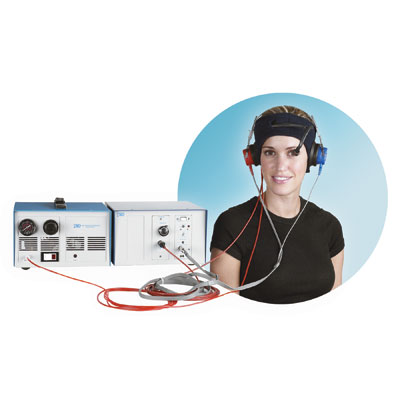Trace eyeblink conditioning is a technique that is frequently employed to understand the neural mechanisms that underly motor learning. It is classical conditioning of learning and memory which works in both human and animal subjects. This technique consists of the paired presentation of tone conditioning stimulus which starts and finishes with an air puff test which will always elicit a response.
After repeated paired presentations, a conditioned eyeblink develops which goes before the air puff. This type of conditioning is something that has been thoroughly studied and the cerebellum (which coordinates and controls muscular activity) is recognized as being critical in both humans and animals.
How Does Trace Eyeblink Conditioning Work?
When an unconditioned stimulus is delivered to the cornea of the eye, sensory information is taken into the trigeminal nucleus and transmitted both indirectly and directly to the accessory abducens and abducens motor nuclei. The output from these nuclei regulates a number of eye muscles that work cooperatively to create an unconditioned blink response to the stimulation.
Eyeblink conditioning is frequently employed to monitor abnormalities in cerebellar-dependent learning and memory which is the underlying idea of this type of associative learning.

Applications of SDI’s Trace eyeblink conditioning system
Eyeblink conditioning is one of the most well-understood and simple techniques of motor learning. The trace eyeblink conditioning system from San Diego Instruments is designed as portable, turnkey systems that can offer high-quality data collection and analysis using menu-driven software that links through a USB interface.
This system can be transported anywhere using a laptop and has a comfortable headset that supports the headset which means the subject responses can be easily viewed.
The system is frequently used in basic learning studies as well as in the examination of the behavioral consequences of diseases such as Alzheimer’s. Eyeblink conditioning is an important component of psychopharmacology research. It can also be used to recognize individuals who have associative learning impairments as delay conditioning can be disrupted in adults and children with neurological disorders including schizophrenia, fetal alcohol spectrum disorder, and autism, and examining eyeblink conditioning in infants can lead to earlier detection and treatment of such neurological disorders.
Why Choose Trace Eyeblink Conditioning Systems from SDI?
SDI’s Trace eyeblink conditioning system does not require technical knowledge to set up as it does not require specialized interface cards and drivers which are often required in trace eyeblink conditioning systems.
Our Trace eyeblink conditioning system menu-driven software controls the stimuli and monitors and safeguards all eyeblink data throughout all sessions. Complete response waveforms are classified as “alpha”, “CS” or “US” and are automatically examined using the special analysis software for secondary peaks.
If you would like to find out more about our eyeblink conditioning solutions, contact us today for more information.